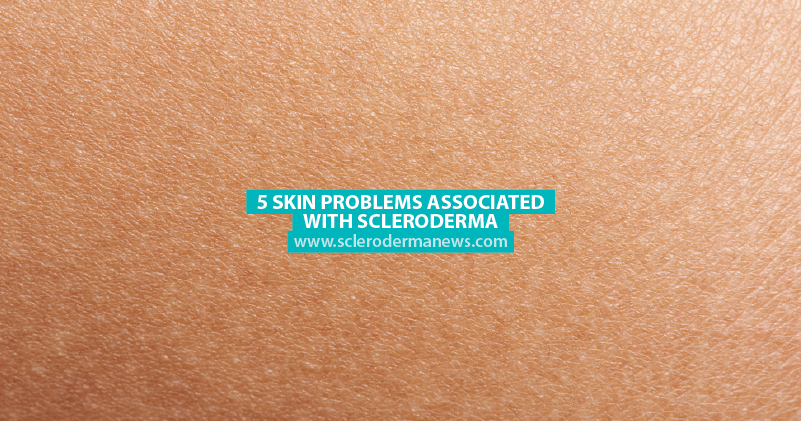5 Skin Problems Associated With Scleroderma

Scleroderma broken down literally means hard skin — sclero (skin) and derma (hard) — but hard skin isn’t the only skin-related issue people living with the condition have to deal with.
MORE: Eight scleroderma-related conditions you should look out for
According to Scleroderma and Raynaud’s UK, here are some of the commonly experienced skin conditions:
Skin Tightening
Skin tightening is due to the overproduction of collagen. There are medications that may help the situation and these are used in conjunction with physiotherapy and exercise to ensure good movement of skin around the joints.
Moisturizing and bathing in warm paraffin wax baths can help soften the skin.
Ulceration
Digital ulcers on the fingers and toes are fairly common for people living with scleroderma but they can occur in other places, particularly the legs if they get knocked. Keeping the legs covered as much as possible can help prevent ulcers from forming as they will protect the skin from becoming damaged.
Ulcers take longer to heal on scleroderma patients as the skin is not as healthy. It’s essential those with scleroderma change their dressings regularly and take the appropriate care to ensure the dressings allow the right amount of moisture to help heal the ulcer. There are medications that can help with blood flow which will quicken up the healing process. If ulcers become infected, antibiotics will be needed.
Telangiectasia
Telangiectasis is a condition where burst blood vessels may appear as red spots on the face and hands. Many choose to cover this up with makeup but new technology in the form of pulse-dyed laser treatment can help to get rid of the broken blood vessels. However, this may cause bruising for up to a week after treatment and may require several treatments before any effect is seen.
MORE: Makeup tips for women with scleroderma
Dryness and Irritation
Dry skin, eczema, and irritation are common ailments for those with scleroderma. Moisturizing with ointments rather than creams can help to lock in moisture and relieve itching. Products containing urea may be of use, although some may find they cause further irritation.
There are various over-the-counter creams that can help fight itching. Taking non-drowsy antihistamines may also help.
Some scleroderma patients have found temporary relief in ultra-violet light therapy, which consists of an eight-week course of treatment at a dermatologist’s office or the hospital. Home UV lamps should not be used as the dosage of UV cannot be monitored.
Calcium Deposits
Calcium deposits are often harmless and in these cases, no action needs to be taken. However, if you find them unsightly, they begin to cause discomfort, or if they become infected they can be surgically removed although they may grow back.
Paraffin wax baths may help the calcium deposits to diminish without surgical intervention.
MORE: Scleroderma may change your life but here’s how to regain control
Scleroderma News is strictly a news and information website about the disease. It does not provide medical advice, diagnosis or treatment. This content is not intended to be a substitute for professional medical advice, diagnosis, or treatment. Always seek the advice of your physician or other qualified health provider with any questions you may have regarding a medical condition. Never disregard professional medical advice or delay in seeking it because of something you have read on this website.






